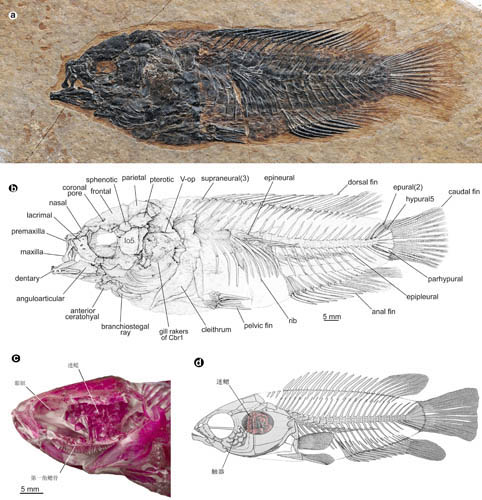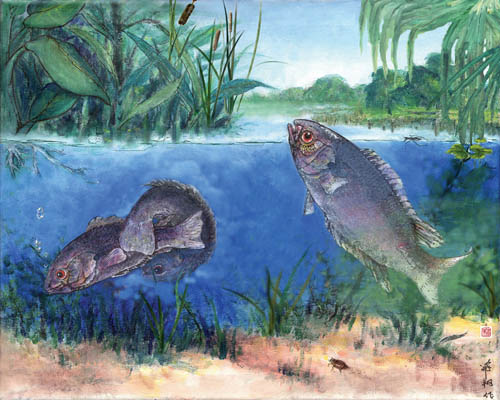The Qinghai-Tibet Plateau has a vast territory and high terrain, and is known as the "Roof of the World". The formation of the Tibetan Plateau was caused by the collision of the Indian and Asian plates (about 50 million years ago). However, scientists have very different understandings of how the plateau rose to its current height and scale, and how the Tibetan environment evolved during the uplift process. big. Regarding the timing of the uplift, some believe that the plateau was formed in the early stages of the India-Asia plate collision and reached its peak in the Oligocene (about 30 million years ago) or the middle Miocene (about 15 million years ago). The current height; other scholars speculate that the plateau did not grow to today's altitude until the late Miocene (about 7 million years ago) or even later; while other views put the uplift time somewhere in between. Regarding the uplift model, people have proposed different models such as overall uplift, stepped uplift, and several alternating uplift and flattening models. In recent years, research on inferring ancient heights based mainly on stable isotope analysis has been very active. The plateau uplift models established on this basis, such as the "proto-Tibetan Plateau", are impressive. This school of thought It is believed that the main body of the plateau was formed more than 40 million years ago.
Biological organisms, especially fish and plants that are very sensitive to the environment, are the most direct and reliable environmental indicators: the cold, warm, dry and wet climate, the height, steepness and gentleness of the terrain correspond to different biological features. By analyzing and comparing the biological information of ancient organisms and related modern taxa, paleontologists can reconstruct the ancient environment of fossil producing areas and even infer the ancient altitude at that time. As far as plateau fish are concerned, the extant Schizothorax (genus Cyprinidae) is an example of "evolution and uplift" (ascent with modification), making the fossil Schizothorax and their related Cyprinidae fishes an inversion of the plateau. A relatively strong basis for ancient height. Almost all previously known Cenozoic fossil fish from the plateau belong to this category. Recently, Wu Feixiang's team from the Institute of Vertebral Paleology published a paper in Scientific Reports, reporting that the late Oligocene strata in the Lunpola and Nyima basins in the central Qinghai-Tibet Plateau (approximately 2600-2600 years ago) 14 million years ago), indicating a warm and humid environment in the lowlands (Fig. 1a, b, d) and its associated plants, adding new independent evidence to reconstruct the geological history of the plateau.
Climbing bass (which belongs to the suborder Climbing Bass along with betta fish and paradise fish) today is mainly distributed in South Asia, Southeast Asia and the tropical areas of central and western Africa (temperature 18 to 30 ℃, the altitude of the distribution area is mostly below 500 meters, and the highest is less than 1200 meters ) at the edge of rivers, lakes or swamp puddles, they prefer shallow, quiet and anoxic water bodies (dissolved oxygen can be as low as 1mg.L-1 or less. Note: The normal life activities of most fish require 4mg.L-1 above). Their gill cavities have flower-like labyrinth organs (labyrinth organs) that are specialized in gill bones (Figure 1c). The surface of the labyrinth gills is covered with respiratory epithelium and has abundant capillaries. Unlike other normal gills, the blood passing through the labyrinth gills returns to the heart through veins. With this organ, the climbing bass can breathe oxygen directly from the air. The complex structure of the gills occupies a large space in the gill cavity, and the gills used for water breathing have greatly shrunk and cannot meet the oxygen required for the survival of the fish. Therefore, the climbing bass must often put its head out of the water to breathe air. , even climb out of the water after the rain, go ashore to "walk" or even "climb a tree". The fossil Eoanabas thibetana from Tibet [scientific name: Eoanabas thibetana] is the earliest and most primitive fossil representative of the Eoanabasidae family. It pushes forward the fossil record of this family by about 20 million years. What’s more interesting is that researchers also observed labyrinth gills in the specimen of C. elegans, and there are holes in the gill bones. It can be seen that the development level of its labyrinth gills is closer to that of the Asian Climbing Bass, which has the strongest ability to breathe in the air. . These characteristics indicate that the fossil climbing perch in Tibet has physiological characteristics and ecological habits similar to those of modern climbing perch, indicating a warm and humid environment, and their habitat may be a relatively restricted water body (Figure 2). This is completely different from today's environment where fossil production areas have high altitudes (nearly 5,000 meters), strong ultraviolet radiation, low water temperatures (the average annual temperature is about 1.0°C), strong fluidity, and high dissolved oxygen. It can be seen that the geographical features and natural environment within the plateau must have experienced tremendous changes since the time of the fossil climbing perch.
This inference is also supported by other paleontological evidence. The plant community in the same layer as the climbing perch includes typical palms with large leaves that like warm and humid environments, calamus, and aquatic plants of the Araceae family that are closely related to duckweeds. According to analysis, the altitude of the community is only more than 1,000 meters. Certain insects from the same layer also indicate similar paleoaltitudes. Other fish, such as the later large-headed Schizothorax (original Schizothorax) and Zhang's Chunlin fish (fossil barbel) in the same layer as the climbing perch, all represent the early stages of plateau development or before the uplift. environment, consistent with the conclusions of this article. The existence of such a biological community also indirectly shows that the warm and moist airflow from the Indian Ocean at that time could at least penetrate deep into the central area of Tibet. Therefore, the huge mountains that stretch east and west in southern Tibet today at least had not developed to the same scale as today. , but not enough to block the tropical airflow from the south.
It can be seen that the uplift history of the plateau based on paleontological evidence, especially inferred from macrofossils, is significantly different from some current inferences based on geological, geophysical and chemical data. Cross-referencing multiple types of evidence can allow the existing plateau uplift model to be continuously improved and revised. Through the life information hidden in the rock formations, paleontologists are deciphering the magnificent history of the great changes in the mountains and rivers of the plateau, and recreating the magic of heaven and earth!
This research was funded by the Strategic Science and Technology Pilot Project of the Chinese Academy of Sciences, the 973 Program of the Ministry of Science and Technology, the National Natural Science Foundation of China, and the Fossil Excavation Special Fund of the Institute of Vertebral Paleontology.
Original link: http://www.nature.com/articles/s41598-017-00928-9

Figure 1. a. Photo and line drawing (b) of the holotype Eoanabas thibetana (IVPP V 22782a) in Tibet; c. The mysterious gills of the living Eoanabas thibetana; d. The skeleton of the Eoanabas thibetana is restored. (Photo provided by Wu Feixiang)

Figure 2. Restoration map of Tibetan Eochinensis and its habitat: There used to be warm and humid lowlands in the hinterland of Tibet in the late Oligocene Epoch (about 26 million years ago), which nurtured an environment and environment completely different from today’s interior of the plateau. ecosystem. (Photo provided by Wu Feixiang)
animal tags: fossil evolution fish tibet
We created this article in conjunction with AI technology, then made sure it was fact-checked and edited by a Animals Top editor.